I adore Mason (everyone calls Elizabeth Mason that.) Her background and the role she has in my books has grown over the years.
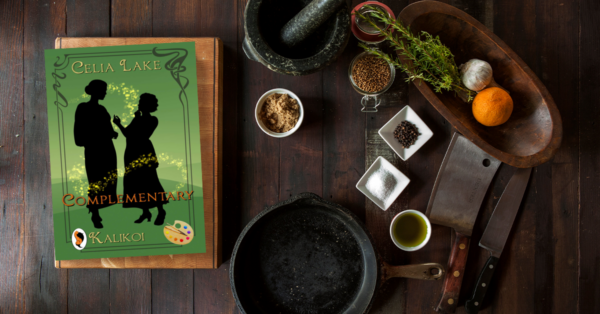
I adore Mason (everyone calls Elizabeth Mason that.) Her background and the role she has in my books has grown over the years.

It’s June again, and that means it’s Pride Month. As you likely know if you’re reading this, most of my books are M/F romances. But more than a few of them have queer or LGBTQIA+ content and characters!
Several include demisexuality (most of my books are also slow burn). A couple have main characters who are asexual and/or aromantic. There’s an F/F romance, a M/M one, and a couple with a MMF polyamorous relationship. And of course the “Enemies to it’s complicated” Best Foot Forward.
I’ve avoided big plot spoilers below. But of course there are some in talking both about people’s identities and orientations, and about which books that’s relevant in. Some additional characters can easily be read as fitting in the following categories. If they do for you, please read them that way!
I’ve a few more ideas coming! This post covers all of that. Plus it ends with a couple of recs of where to find other great queer romances.
Want a handy list of my books that are particularly LGBTQIA+?
Showing books 1-9 of 9
Period: Edwardian
Romance: F/F, Late in life romance, Closed door, Lesbian
Content notes: Click here to reveal
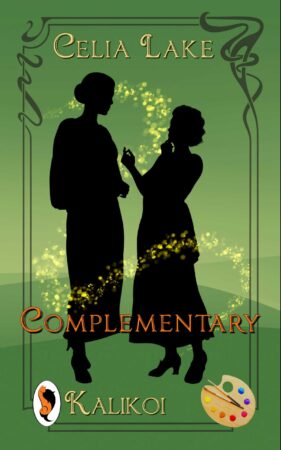
Period: 1920s
Romance: M/F, First relationship, Demisexual, Bisexual
Content notes: Click here to reveal
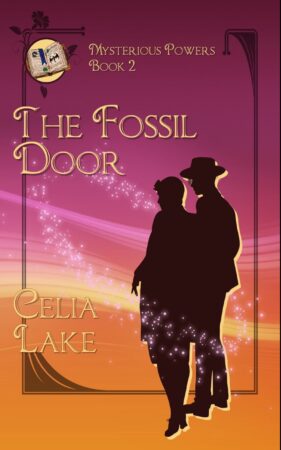
Period: 1920s
Romance: M/F, First relationship, Late in life romance, Closed door, Demisexual
Content notes: Click here to reveal
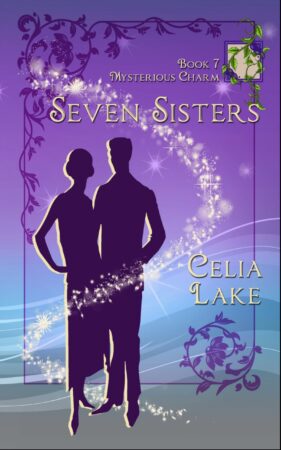
Period: 1920s
Romance: M/F, First relationship, Late in life romance, Demisexual
Content notes: Click here to reveal
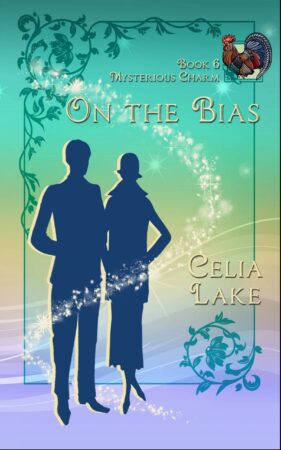
Period: 1930s
Romance: M/M, Late in life romance, Asexual, Bisexual, Polyamorous
Content notes: Click here to reveal
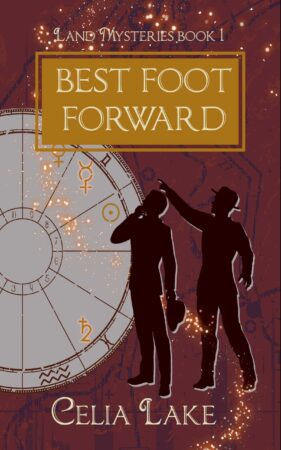
Showing books 1-9 of 9

Or here’s Geoffrey, commenting on the state of his relationships and the people he loves, not always in easy to label ways.
(more…)“As I keep saying, if I am lucky, he will to the end of our days. See, I am already experienced in complicated relationships that no one understands. We’ve muddled along, far better than fine, for going on twenty years now.”
Geoffrey Carillon, Best Foot Forward, chapter 41
It seems a good time for an update on neurodiverse characters in my books (the last one was back in 2021.) April is one of the months celebrating neurodiversity (Autism Acceptance Month), and there was a recent extensive rec post on /r/romancebooks on Reddit for romances with neurodiverse characters.
As I did in 2021, we’re going to go at this by character (alphabetically by first name), since many relevant characters appear in multiple books. My goal with writing has always been to reflect a wide range of experiences of the world like me and many of my friends. And that includes people who don’t always get to be the ones on adventures or getting a happy ever after romance.
There are a number of other characters in my books you might reasonably read as neurodiverse. I’ve mentioned a few at the end of the post that Kiya and I have discussed back and forth, but some of this is in the eye of the beholder. Reader perception is important too!
Just want to explore some books? Here are all the titles that particularly feature a neurodiverse character.
Showing books 1-16 of 16
Period: Edwardian
Romance: F/F, Late in life romance, Closed door, Lesbian
Content notes: Click here to reveal

Period: 1920s
Romance: M/F, First relationship, Demisexual, Bisexual
Content notes: Click here to reveal

Period: 1920s
Romance: M/F, First relationship, Late in life romance, Closed door, Demisexual
Content notes: Click here to reveal

Period: 1920s
Romance: M/F, First relationship, Late in life romance, Demisexual
Content notes: Click here to reveal

Period: 1920s
Romance: M/F, Established relationship, Closed door
Content notes: Click here to reveal
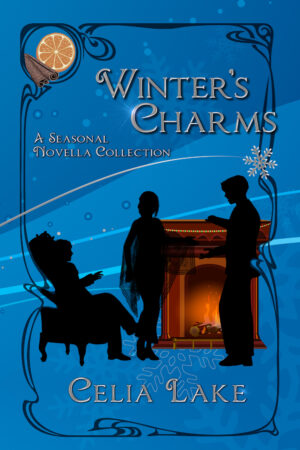
Period: Second World War
Romance: M/F, M/M/F, Established relationship
Content notes: Click here to reveal
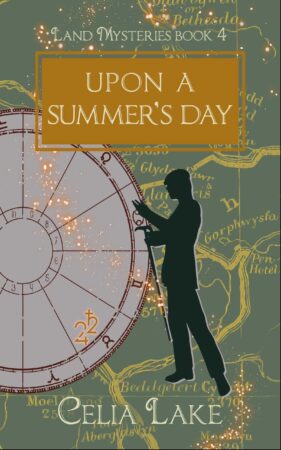
Showing books 1-16 of 16

You can also find more of a number of these characters in various of the extras I’ve written and shared.
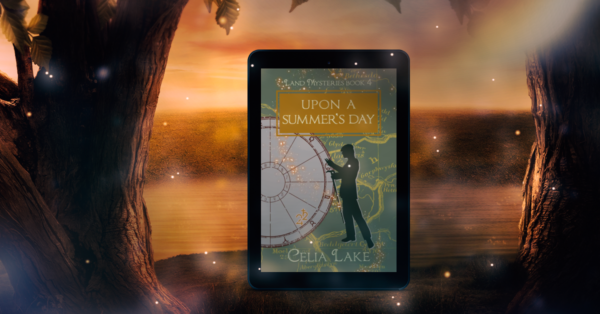
One of my romance spaces was talking about romances that don’t presume a child is necessary for the happily-ever-after of the romance. If you’ve read my work, obviously I’ve got a mix in here. I thought it might be interesting to talk about the variations.
(I obviously think people can find happiness in a whole bunch of different configurations and life choices. My characters make a wide range of choices, both in the immediate aftermath of a book and further down the road.)
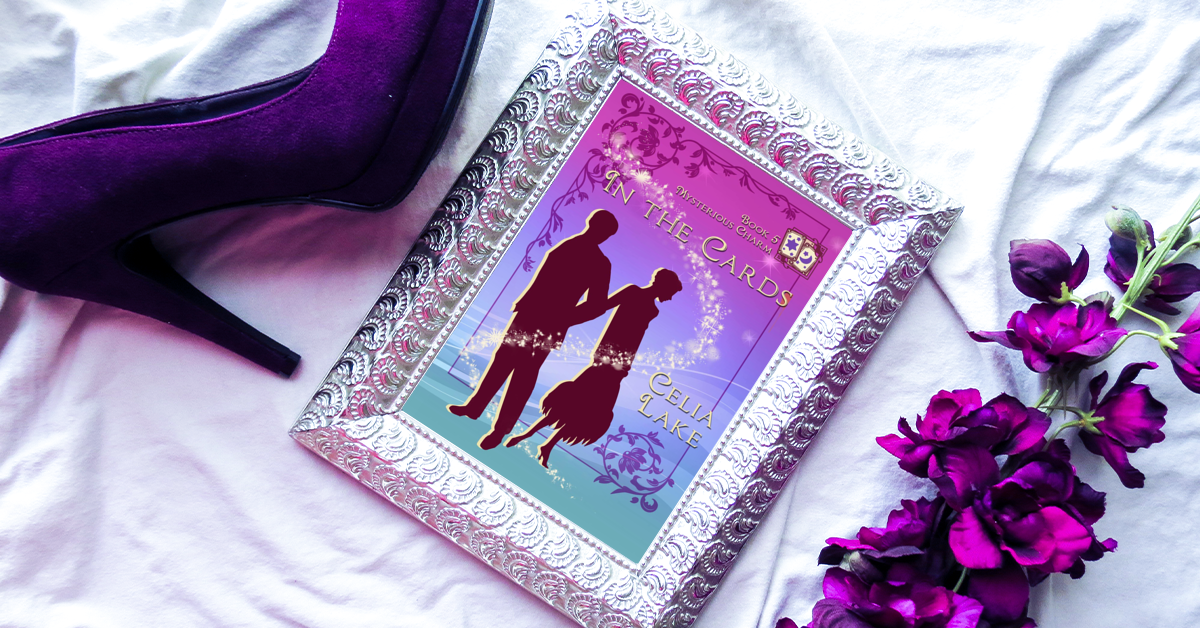
Complementary is a f/f novella in 1910, and it’s full of art, forced proximity, and a dash of folklore.
Fundamentally, Complementary exists for two reasons. First, I wanted to spend a bit more time with Elizabeth Mason (who appears in several other books, notably Pastiche, The Fossil Door, and Old As The Hills.) Second, I knew people who were getting a collaborative project off the ground to feature f/f or sapphic romance, Kalikoi.

Mason – as she is widely known – and Witt are both Penelopes, a relatively small community of specialists who figure out what magical chaos has happened now and fix it (or at least get it stable). They’re Albion’s forensic scientist specialists, but they’re also the people you call in when someone has done something troublesome in an alchemy lab or with one of those ritual methods that really, no one should mess with.
They were apprentices at the same time, and have worked together closely ever since, in the manner of people who can and do finish each other’s sentences.
They’re not the same, though. There’s a theory out there – first put forward by forward by Dahilia Lithwick in 2012 that divides people and characters into Order Muppets and Chaos Muppets. (I should note that the original article discusses Supreme Court justices in the US in ways that have aged unevenly, shall we say.)
This also applies to Penelopes. Mason is the Chaos Muppet of the two, and Witt is definitely the Order Muppet. On average, the Penelopes alternate when they do apprenticeships, though not entirely. (Lucy Doyle, who was Witt’s favourite apprentice and Gabe’s apprentice mistress is definitely also an Order Muppet.) Gabe, of course, is also a Chaos Muppet. Neither he nor Mason are precisely out of control, but they do definitely have unconventional solutions to a number of problems.
Anyway, I wanted to spend more time with Mason, and in her head. (Want more Witt? You can get a brief section from Witt’s point of view in the extra “Three Times Told“, that takes place after The Fossil Door. There are a few more bits from Witt’s POV coming in extras for Upon A Summer’s Day.)
Mason is an artist who has a hobby of forging historical documents for fun and education. (How do you know how to detect them if you don’t try making them yourself? I might also have been thinking of a particular episode of Leverage in there.) Complementary gives her a chance to show off her art skills as well as her investigation skills.
I also had mentioned her partner Rosemary a few times, and I wanted to know how they got together. Rosemary is a midwife by profession, so keeps irregular hours and is also reasonably tolerant of Mason’s habit of covering every flat surface with other objects.
During the 19th and early 20th century, there were a huge number of artist colonies dotting scenic bits of the British Isles. Like the one in Complementary, they weren’t always terribly well organised. Basically, you’d get a bunch of people together, some amount of shared resources to rent somewhere to live and manage some amount of food, and then everyone would go off and sketch and paint and whatever. It was usually the more portable arts, of course, especially if you were ending up somewhere more rural.
One of the things that was appealing about writing about it is that you have a range of personalities thrown in together who might not otherwise have spent a ton of time with each other. Add a bit of a challenge to solve and it makes a great setting.
Finally, I wanted to have some fun with folklore. That area of England turned out to have some delightful bits of folklore. King Onna, the barrow, the Black Shuck, and the Devil beating on the church of the door are all part of the ongoing lore and conversation. If you do a search on any of these and throw in the word “Southwold” or “Norfolk”, you should dig up several versions.
(Though to be fair, it’s hard to come across spots that don’t have some sort of legend about large black dogs. They’re as common as healing wells, you can’t avoid coming across them regularly.)
The Deadman’s Barrow is actually relatively close to Sutton Hoo, a famous Anglo-Saxon burial site of the 6th and 7th centuries that was first excavated in the 1930s. You may have seen the famous helmet or other items from the site.
If any of this intrigues, do check out Complementary, a novella of 35,000 words, just the right length for a pleasant treat.
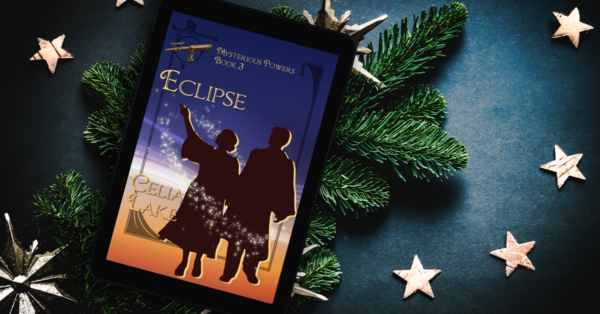
Hello, and welcome to 2022! I have aspirations and intentions of doing more regular blogging about my books and writing this year, so I thought it’d be great to start out with what I’m hoping to write and publish this year.
(As always, my newsletter gets all the news first, including some additional details that won’t be on the blog. Also some extra scenes or short stories from time to time as I’m inspired to write them.)
(2021 was an amazing year! The Fossil Door, Eclipse, Fool’s Gold, Sailor’s Jewel, Complementary, and Winter’s Charms all came out thanks to my being home a lot more. I’m expecting my writing speed to drop a bit in 2022, but I also have a lot of things I want to write, so I’ve got some ambitious goals.)
I’m hoping to release 4 books and 2 novellas in 2022. Because of the way I draft and edit, three of the four novels already exist in draft (or will within a week or so, I’m finishing one of them right now.) My goal is to hit the months indicated, but it’s a changeable world out there, so dates may shift somewhat in the process.
The Hare and the Oak: A later-in-life romance featuring Cyrus Smythe-Clive (seen in Sailor’s Jewel as Rhoe’s older brother, and briefly in Carry On and Eclipse). When Lord Baddock shows up at the Council Keep looking for help, Cyrus and Mabyn Teague (seen briefly at the end of Eclipse) need to figure out why the land magics are failing, find a lost heir, deal with Lord Baddock’s difficult mother, and decide how much they’re willing to trust each other. Out sometime in February 2022.
Point By Point: Lydia needs to make a name for herself as a journalist, but she needs an entry point into the right social circles to investigate a particular story. When Galen (last seen in In The Cards) agrees to help, they’re drawn into a world of horse racing and dangerous secret societies. Fortunately, with the help of the Dwellers in the Forge, including Martin (Galen’s best friend), they’re able to find a way through. (Alternately, ever wonder about the aftermath of Magician’s Hoard? This is also about what happened next.) Out in May 2022.
Mistress of Birds: When Thalia’s great-aunt needs a rest cure, Thalia agrees to stay at her estate on the edge of Dartmoor to keep an eye on the place. (Thalia’s career as an author isn’t going very well, so getting room and board doesn’t exactly hurt.) Once there, she discovers a mysterious man in the apple orchard, and a series of odd and spooky events around the ancient house. Out in August 2022. Last book in the Mysterious Powers series.
Also coming out in 2022 if all goes well are three things that I haven’t written yet…
When I wrote Eclipse, my editor Kiya left a note at one point saying “I now sort of want the buddy cop story in which Alexander and Carillon team up to utterly destroy a munitions smuggler.” Every single one of my early readers (all friends) left comments wondering how they could encourage that to happen. Since I can take a hint, I started thinking about how to make it work.
Best Foot Forward is going to be the result. Here’s the trick: while it’s about friendship and chosen family, and caring about other people, it’s not actually a romance. (Alexander is both asexual and aromantic. He doesn’t have the terms for either, though he’d grab them with both hands if he could.) Carillon, mind, is still very happily married to Lizzie (see Goblin Fruit and On The Bias), so there’s going to be some needful conversations and sorting out what to do about this man who is, in other ways, very much Carillon’s type.
I’m going to start writing this one in February, and it’s looking like it’s going to be a grand set of adventures across the Contintent in 1935. (Probably mostly Germany and Switzerland, but I reserve the right to change my mind later if I have a better idea.) It should be out in November 2022.
I’ve been saying I didn’t want to get into the Second World War, but having had this idea, it feels wrong to just do one book in the time period. I have now laid out the bones of two more books (to make a trilogy). Chances are decent there will eventually be some surrounding novellas, too.
The second book doesn’t have a title yet, but it’s going to deal with Gabe and Rathna (from The Fossil Door) in 1940 and focus largely around their relationships with their apprentices and communities. Why? For a lot of the book, they’re going to be in different places. (Yay for magical journals and direct speedy communication? Makes a long-distance relationship so much easier.)
Also, it will be full of land magic, the Magical Battle of Britain from Albion’s perspective, and a bit more portal magic applied in service of getting people to safety. I plan to start writing this one in August 2022 and it will be out in May of 2023 if all goes well.
The third book? Well, for the moment, let’s just say that sitting down to work out the next generation (i.e. who of my extant characters had kids in the late 20s and 30s, and what’s going on with their families) led to an idea that is also decidedly not a romance.
It is, however, set at Schola. (I’ll be sharing more with my mailing list about this, first, so check in there if you want more details.) I don’t plan to start writing this one until February of 2023.
Now that I’ve finished a second series of 1920s books, I need to start a new one, right? I’ve got all these secret societies attached to Schola, and only one of them has gotten any serious time on the page (the Dwellers at the Forge, in both In the Cards and the forthcoming Point By Point.)
I haven’t actually sketched out the details of this series yet in more than very broad strokes, but they’ll
a) Take place during the 1920s (or maybe the Great War)
b) Each book will have at least one main character who’s a member of one of the seven secret societies.
c) Each will focus on some sort of art (or craft) – I’m thinking about things like music and dance and theatre, but also considering things like bookbinding, perfume making, illusion performances, jewellery making, or dyecrafting. If you have something you’d love me to think about, drop me a note via the contact form or email.
Once I figure out the sequence, my plan is to write one in May 2022, and one in November, with them coming out in 2023. (I normally write over a 3 month period, and then it sits for a bit before I edit. This is why I can be fairly predictable about release dates, if you’d been wondering that…)
I’ve been chewing on a prequel novella about Carillon inheriting the title for a while, and in December finally figured out how to structure it properly. It will be a freebie for signing up for my mailing list (you’re always able to immediately unsubscribe if you’d rather…) and I’ll announce it here and on social media when it’s available. I expect it to have a lot of Carillon and Benton, and also spend some time with how Carillon, Richard and Alysoun Edgarton, Giles Lefton, and Hippolyta FitzRanulf connect to each other. This one’s set in 1921.
Time and energy allowing, I’m also hoping to do a prequel novella for the Mysterious Powers series, focusing on how Roland Gospatrick’s parents (seen in Carry On) decided to marry each other, and how that started.
I’m aiming for the Carillon novella to be out sometime over the summer, and the Gospatrick one sometime after that.
I have somehow written a lot of books! I know it can be confusing to figure out who’s in which book, or the complete timeline, or where things are located.
Help is on the way, however. I spent my vacation time over the holidays working on a solution. It needs some more hours to get everything sorted the way I want, but I’m expecting to be able to share the core of it starting in January or maybe February. Keep an eye on my newsletter for more (including a sneak peek) and let me know if there’s a topic you’d particularly like me to cover.
(Or for that matter, if there’s something you’d like me to blog about. I’m aiming for every fortnight, aka every two weeks, and I’m going to start with some “Idea to book” posts.)
If you’ve read more than a couple of my books, chances are that you’ve noticed a number of them have characters who are what we’d now describe as neurodiverse.
Neurodiversity is a term that encompasses a lot of conditions or experiences of how people think and interact with the world. They can include a wide range of things we have some names for, and plenty of things we don’t.
Some you’ve probably heard of include autism, ADHD or ADD, dyslexia, dyscalculia, or dyspraxia Tourette’s Syndrome and some mental health conditions. Some estimates suggest that 30-40% of people fall into at least one of these categories (there can be overlaps, which make statistics harder…)
There’s also a huge range of experiences and ways this shows up for people. Each and every person has a unique brain and set of life experiences. All sorts of factors like family support or expectations, educational support, professional support and guidance (if testing and/or medication is part of the picture) make a difference in what it means for an individual.
We also know that while the term ‘neurodiversity’ is quite modern (it was coined in the late 1990s by Australian sociologist Judy Singer), that neurodiverse folks have been part of the world since, well, there were people.
For example, John Donvan and Caren Zucker wrote In a Different Key: The Story of Autism, a history of autism. As part of their research they discovered records from the mid-1800s that pretty clearly describe what we’d call autism today, and they talk about some earlier examples where there are less thorough notes.
One theory about why we see more people with these diagnoses or identifications these days is that modern society is a great deal more complex. Most people are asked – as part of ordinary daily life – to deal with a huge range of different situations and stimuli and expectations.
These include plenty of different noises (traffic, sirens, background music in every store ….), bright lights, dealing both with people who are well-known and a lot of total strangers (especially in the kind of work often open to people who are either still in school or are figuring out what they want to do with their lives.)
Modern life often expects us to reach a certain level of skill with a huge range of things, rather than being focused on a small number. Just think about all the skills someone needs to be competent in for a high school diploma – not just the subjects themselves, but technology skills, a certain amount of social skill (all those group projects…), and often many other non-academic expectations like community service.
It’s a big difference to the historical past. Even fifty years ago, many (though certainly not all) people might live much or all of their life in their home area or around people they’d mostly known from childhood. Even people who travelled or emigrated often did it in a context where they knew people with them, or where a situation was entirely new and challenging for everyone. Or it had some sort of structure to the expectations. In those cases, working through the situation could be more transparent and shared by everyone.
In addition, some people have an easier time than others of interacting in neurotypical society (or seeming to work with those expectations, anyway). Others have a much harder time. For people where the effort of doing so isn’t obvious, others may not realise what’s going on inside their head. They may only talk about it with a few close friends or family members. They might not talk about it much with anyone at all.
At this point, I’ve published five books that have neurodiverse characters. Three of them probably wouldn’t define themselves as being notably different from other people, but those experiences and how their minds work definitely shapes their interactions with the world and their stories.
On The Bias features Thomas Benton, who went into service in a great country house at age twelve. It’s clear from his comments several times in the book that he found the structure and clear expectations very reassuring. A country house ran rather like clockwork: each person had their set of duties and knew the expected standards they had to meet. Even the social interactions were laid out pretty clearly – who you socialised with below stairs, what you did on your afternoon off, what the next step in advancement would involve.
Benton eventually became a valet, and then was thrown into the chaos of the trenches of World War I. He did his best to become very competent at what he could control (he is, for example, extremely good at charms to heat up water – a comfort in the trenches.) Once he came into the sphere of Lord Geoffrey Carillon, there was someone he could look to (in a socially expected and structured way) for what he should be doing, and how to do it. At the same time, his attention to detail and a certain determined focus on his work meant he was a superb valet for an adventuring younger nobleman. He trusted Carillon would explain what was needed on the adventuring side, and then he set about making it happen.
Cadmus Michaels, in Seven Sisters is in somewhat of the same position. While he has his strong interests and his preferences for how things are done, he happened to be born into a life where those things fit with what was expected of him. Mostly. A man of his class and education is permitted a bit of eccentricity, after all. If the money is there, being a somewhat reclusive classicist is an entirely acceptable mould for a man. Even his time in the Colonial Service was largely expected, and a place where the needed skills and social expectations were well-known.
Gabe Edgarton in The Fossil Door is the exception in my list above. He – and his family – are quite clear his mind isn’t like most people’s. While Gabe doesn’t have a term like ADHD to work with, he knows he skitters around between ideas, that he’ll make startling choices. And he definitely should not be left entirely alone with his impulses without some moderating influence.
He was lucky enough to have parents who didn’t entirely understand how he thought, but who made sure he had the support to figure it out for himself. He didn’t go to tutoring school (common for people of his class and privilege). Instead various of the adults in his life made sure he got additional resources for learning. He bounces around too much from topic to topic to make friends easily, but in among people who also love the endless puzzle, he does fine. Better than fine.
Thesan Wain in Eclipse is possibly the character where it’s least obvious. When reading her point of view chapters, it becomes obvious that sometimes the world is too fast and too bright and too complicated for her to sort out right in the moment. Stars, her beloved field, are very far away and don’t generally move quickly at all. The others in her field tend to appreciate steady reliable work and a certain obsessive focus on detail.
However, if you were to ask her about it, I think she’d blink a lot. From inside her head, many of the things she struggles with are about issues of class, expectations she doesn’t fully understand (often related to class and social niceties), and the eternal question of dealing with widely varying students. That these things also are partly about neurodiversity, well… that’s why sorting this out gets complicated.
The last published work so far is Complementary, a novella about Elizabeth Mason, which makes it clear that she (like Gabe) is somewhere in this set of experiences. She is, perhaps, slightly less likely to fling herself out a window as a resolution to a problem. (Though compared to Gabe that’s not a high bar to get over.) But she is a tad impulsive, a very non-linear thinker and problem-solver, but capable of intensive focus. She’s also very used to working with people who tolerate or even admire her admittedly many quirks and preferences.
In Casting Nasturtiums, a novella due out in December 2021, Golshan Soltani also has what we’d call ADHD, and before that novella begins, has funnelled it into a mix of duelling, Materia training, and running a music hall with its endless challenges. When injuries during the Great War change what’s practical for him, he has to rearrange a whole lot of expectations about how to handle the bees in his head.
As with much of my other writing, I want to write books where people like me, like my friends and loved ones, get to have romance and love. Where they get to have adventures and come safely home. (And have a home that is safe to come to…)
That’s as true when we’re talking about how someone’s mind works as their body.
I owe many things to my editor, Kiya Nicoll (an author in their own right), who is also a long-time friend. But I especially owe them a lot of thanks for helping me figure out how to best show the neurodiversity of my characters on the page. And also for nudging me to write this post in part to highlight Thesan, in particular, as a model of neurodiversity that often goes unremarked.